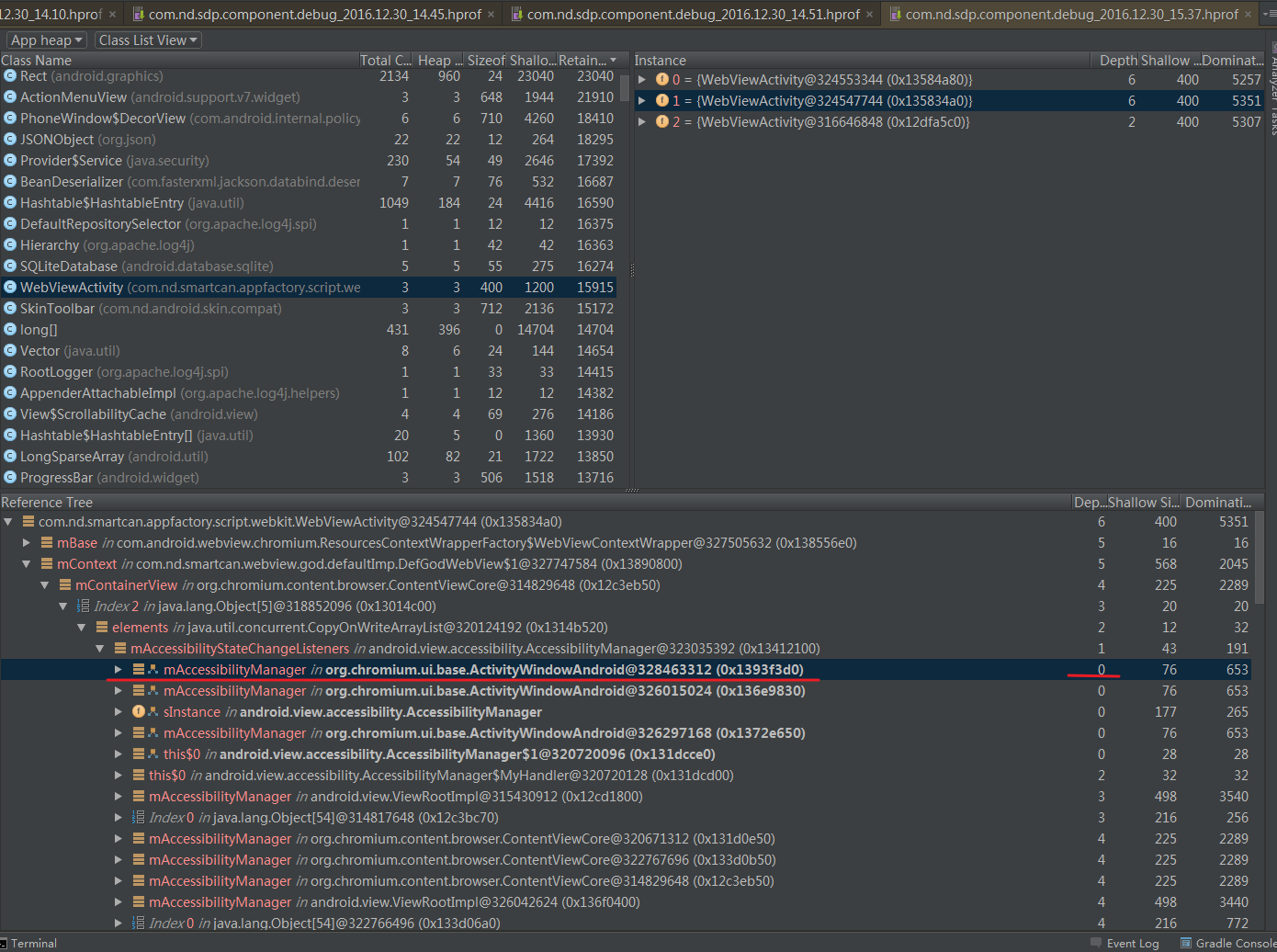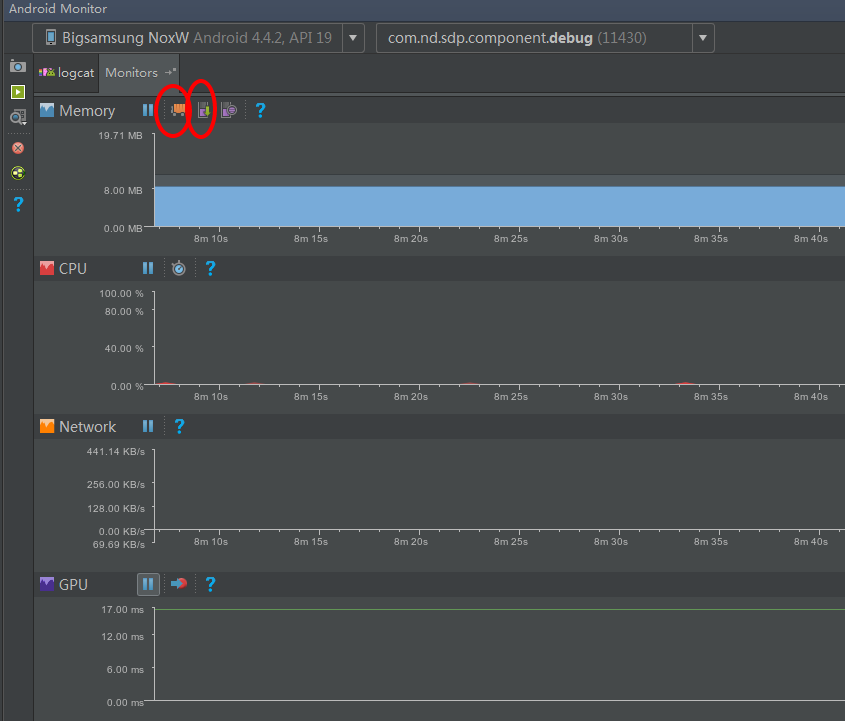0. Notice - earlier version
- 要使用WebView不造成内存泄漏,首先应该做的就是不能在xml中定义webview节点,而是在需要的时候动态生成。即:可以在使用WebView的地方放置一个LinearLayout类似ViewGroup的节点,然后在要使用WebView的时候,动态生成即:
WebView mWebView = new WebView(getApplicationgContext());LinearLayout mll = findViewById(R.id.xxx);mll.addView(mWebView);
然后一定要在onDestroy()方法中显式的调用:
protected void onDestroy() {super.onDestroy();mWebView.removeAllViews();mWebView.destroy()}
注意: new WebView(getApplicationgContext()) ;必须传入ApplicationContext如果传入Activity的Context的话,对内存的引用会一直被保持着。有人用这个方法解决了当Activity被消除后依然保持引用的问题。但是你会发现,如果你需要在WebView中打开链接或者你打开的页面带有flash,获得你的WebView想弹出一个dialog,都会导致从ApplicationContext到ActivityContext的强制类型转换错误,从而导致你应用崩溃。
1. What leads to Memory leak
1.1 InnerClass
public class InnerClassActivity extends Activity{private static Leak mLeak;class Leak {int a = 3;private Context mLeakContext;Leak(Context context) {mLeakContext = context;}}@Overrideprotected void onCreate(Bundle savedInstanceState) {super.onCreate(savedInstanceState);setContentView(R.layout.test);mLeak = new Leak(this);Toast.makeText(this, "This is InnerClassActivity", Toast.LENGTH_SHORT).show();}}
1.2 Singleton
public class Singleton {private static Singleton instance;private Context mContext1;private Singleton(Context context) {this.mContext1 = context;}public static Singleton getInstance(Context context) {if(instance == null) {synchronized (Singleton.class) {if (instance == null) {instance = new Singleton(context);}}}return instance;}}
1.3 webview - earlier version
public class WebViewCreateActivity extends Activity{@Overrideprotected void onCreate(Bundle savedInstanceState) {super.onCreate(savedInstanceState);setContentView(R.layout.webview_create);LinearLayout ll = (LinearLayout) findViewById(R.id.ll);LinearLayout.LayoutParams layoutParams = new LinearLayout.LayoutParams(ViewGroup.LayoutParams.MATCH_PARENT, ViewGroup.LayoutParams.MATCH_PARENT);WebView webView = new WebView(this);webView.setLayoutParams(layoutParams);WebSettings webSettings = webView.getSettings();webSettings.setJavaScriptEnabled(true);webSettings.setDomStorageEnabled(true);webView.loadUrl("https://www.baidu.com/");ll.addView(webView);Toast.makeText(this, "Hello", Toast.LENGTH_SHORT).show();}}
2. How to detect the Memory Leak
2.1 Android Studio
- GC manually
- dump Java Heap
2.2 MemoryLeak in Our Project
| 品牌 | 固件 | 泄漏点 |
|---|---|---|
| 三星 | 4.0.4 | LightAppManager |
| 小米 | 5.0.1 | LightAppManager/ mAccessibilityManager |
| 华为 | 6.0 | LightAppManager/ mAccessibilityManager |
2.2.1 LightAppManager泄漏
泄漏点2: WebView-wrapper getSystemService泄漏 
3. 官方态度
It's 2016 now and, as far as I can see it, the issue still hasn't been resolved. I tested it on Nexus 5 and Nexus 6 with the latest WebView updates (since the component is now separate from the OS itself). Could someone, please, take a look at this issue?!







 本文介绍如何避免使用WebView造成的内存泄漏,包括不在XML中定义WebView节点、正确销毁WebView实例的方法,并探讨了导致内存泄漏的一些常见原因如内部类和单例模式的不当使用。
本文介绍如何避免使用WebView造成的内存泄漏,包括不在XML中定义WebView节点、正确销毁WebView实例的方法,并探讨了导致内存泄漏的一些常见原因如内部类和单例模式的不当使用。



















 6343
6343

 被折叠的 条评论
为什么被折叠?
被折叠的 条评论
为什么被折叠?








